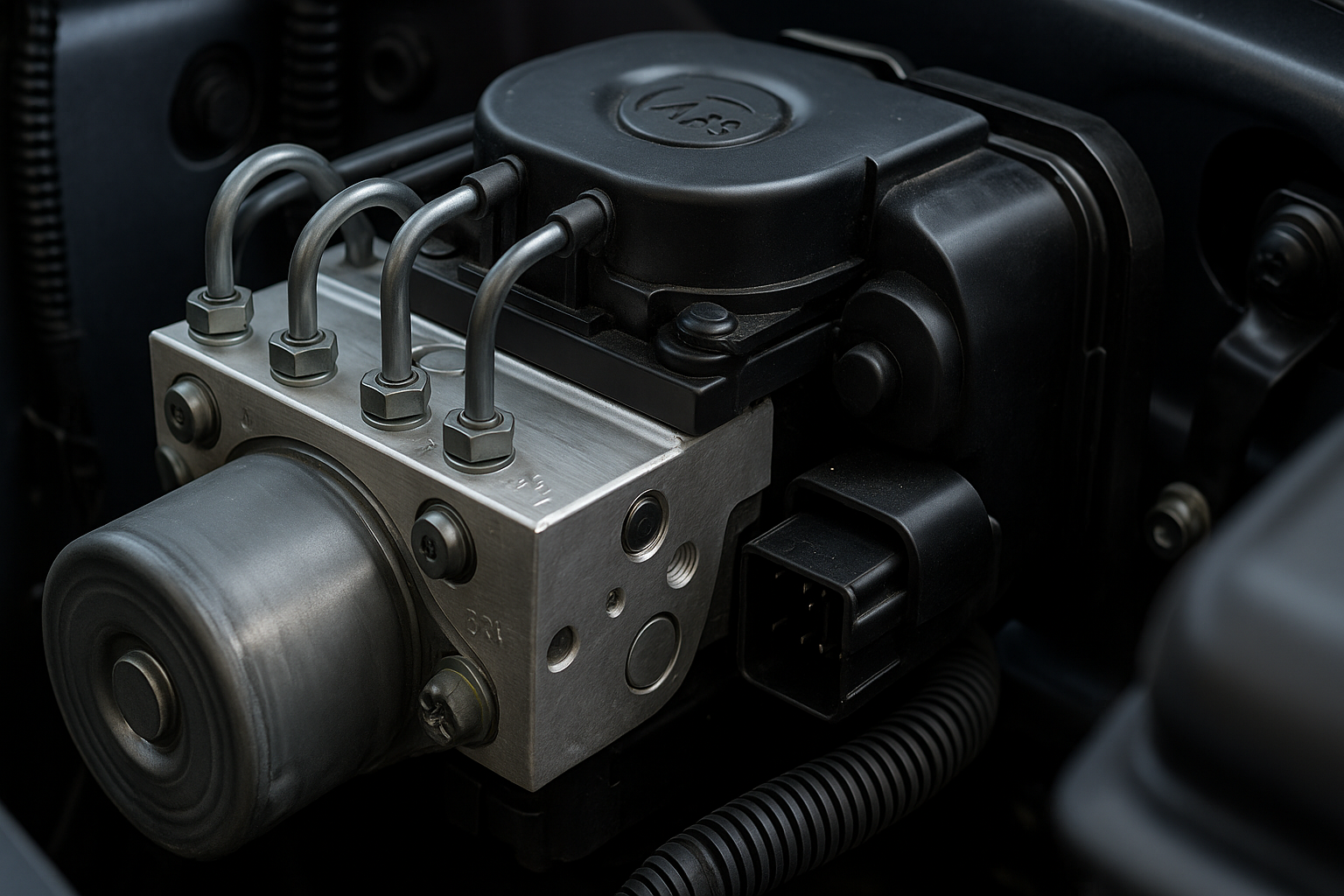Modern vehicles come equipped with advanced vehicle safety features designed to help drivers maintain control in slippery or emergency situations. Two of the most important systems are the Anti‑Lock Braking System (ABS) and traction control. In this guide, we’ll explain how each system works, explore their benefits, and show why understanding ABS explained can make you a safer driver.
1. What Is ABS? ABS Explained
The Anti‑Lock Braking System prevents your wheels from locking up under heavy braking, allowing you to steer around obstacles instead of skidding straight ahead. Here’s how it works:
- Wheel Speed Sensors: Each wheel has a sensor that monitors its rotational speed.
- Electronic Control Unit (ECU): Detects when a wheel is about to lock by comparing wheel speeds.
- Hydraulic Modulator: Rapidly pulses brake pressure three to fifteen times per second to maintain traction.
By modulating brake pressure, ABS keeps the tire’s contact patch from sliding uncontrollably, reducing stopping distances on wet or icy roads and enabling you to maintain steering control.
2. How Traction Control Works
Traction control complements ABS by preventing wheel spin during acceleration. It uses many of the same wheel‑speed sensors and ECU logic:
- Detection: Sensors notice when a drive wheel spins faster than the others, indicating a loss of grip.
- Intervention: The ECU reduces engine torque—by retarding ignition timing or cutting fuel—and/or applies brake pressure to the spinning wheel.
- Restoration: Once traction returns, normal power delivery resumes.
Traction control helps you launch more smoothly on slippery surfaces, such as wet pavement or loose gravel, reducing wheel spin and improving directional stability.
3. ABS vs. Traction Control: Key Differences
While both systems rely on wheel‑speed sensors, their purposes differ:
- ABS: Activates during braking to prevent wheel lock‑up and maintain steering control.
- Traction Control: Activates during acceleration to prevent wheel spin and maintain forward momentum.
Together, they form a coordinated safety network, with ABS managing deceleration and traction control managing acceleration, both leveraging the same brake‑hydraulic hardware and ECU intelligence.
4. Benefits of ABS & Traction Control
Understanding these vehicle safety features highlights several real‑world advantages:
- Shorter Stopping Distances: ABS can reduce braking distance by up to 20% on wet roads.
- Improved Steering Control: Prevents skidding, allowing drivers to steer around hazards while braking.
- Smoother Acceleration: Traction control minimizes wheel spin, especially on ice or gravel.
- Reduced Tire Wear: Controlled braking and acceleration reduce flat spots and uneven wear.
- Enhanced Confidence: Drivers feel more secure knowing their car will help modulate braking and power delivery.
5. When to Rely on These Systems
While ABS and traction control intervene automatically, it’s helpful to know when they engage:
- Wet or Icy Roads: Sudden braking or hard acceleration will trigger ABS and traction control most effectively.
- Loose Surfaces: Gravel, sand, or snow often cause wheel slip, where traction control shines.
- Emergency Maneuvers: Panic stops will activate ABS, helping you steer around unexpected obstacles.
Note that these systems improve safety but do not replace proper driving techniques—maintaining safe following distances and adjusting speed for conditions remain essential.
6. Maintenance and Troubleshooting
To ensure your ABS and traction control continue to function:
- Inspect Wheel Sensors: Clean sensors and wiring regularly; replace damaged components.
- Check Brake Fluid: Maintain proper levels and change fluid according to manufacturer guidelines.
- Monitor Warning Lights: An illuminated ABS or traction control light indicates a fault—have it diagnosed and repaired promptly.
- Keep Tires in Good Condition: Match tire sizes and pressure on all wheels to ensure sensor accuracy.
Conclusion
By understanding ABS explained and the workings of traction control, you’ll appreciate how these vehicle safety features combine to keep you in command—whether you’re braking on a rain‑slick highway or accelerating out of a snowy driveway. Regular maintenance and respect for road conditions will help these systems perform at their best, enhancing safety and confidence on every drive.

Leave a Reply